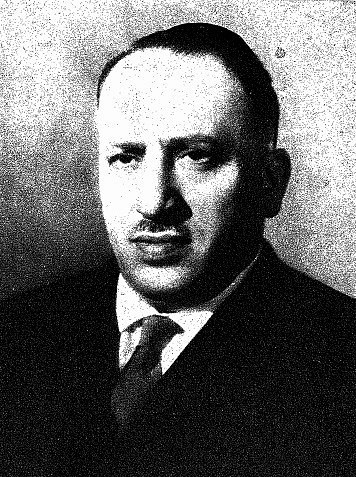- News
- Events
- Oneg Shabbat
- Collections
- Research
- Exhibitions
- Education
- Publishing Department
- Genealogy
- About the Institute
- Bookstore

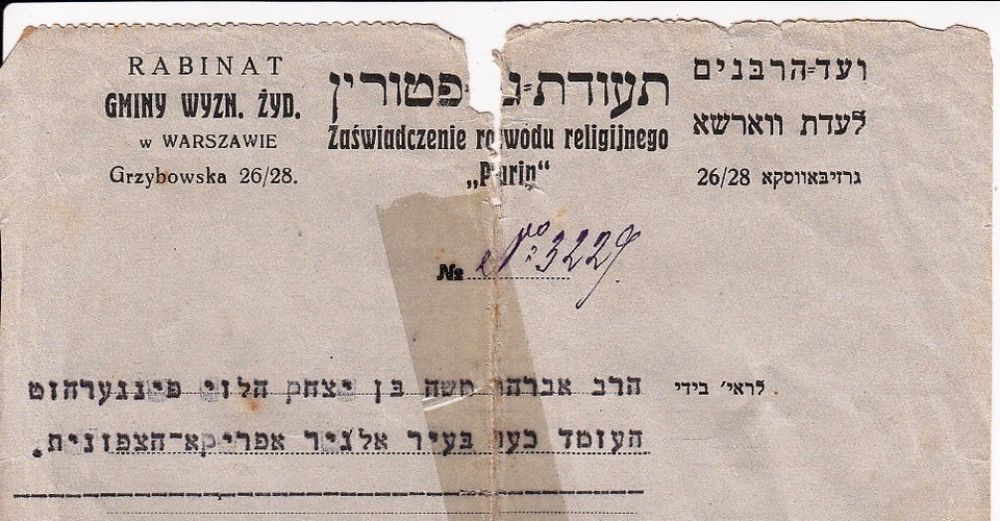
Chana Hermelin married Avraham Moshe FINGERHUT, probably in Warsaw. Avraham Moshe was a rabbi, from a family coming from a city named Turek in Poland. Not being connected to a strong rabbinical family he searched for jobs in far-away places. The young couple moved to France, where their first son was born. From there Avram Moshe moved to Lisbon and Algiers. Chana did not come with him. From unknown reasons she returned to Warsaw. A few years later — already in a position in the town of Algiers in northern Africa, Avram Moshe got a request from Chana for a divorce. In the religious Jewish law — the Halacha — a divorce is something the man gives the woman (literally — he send her away), and he can prevent it from her.
The documents tell the story of this divorce request:
Avraham is looking for a job and receives a recommendation from a known Warsovian rabbi — Tzvi Yechezkel Michelzon, and we can assume on this basis he got the job abroad:
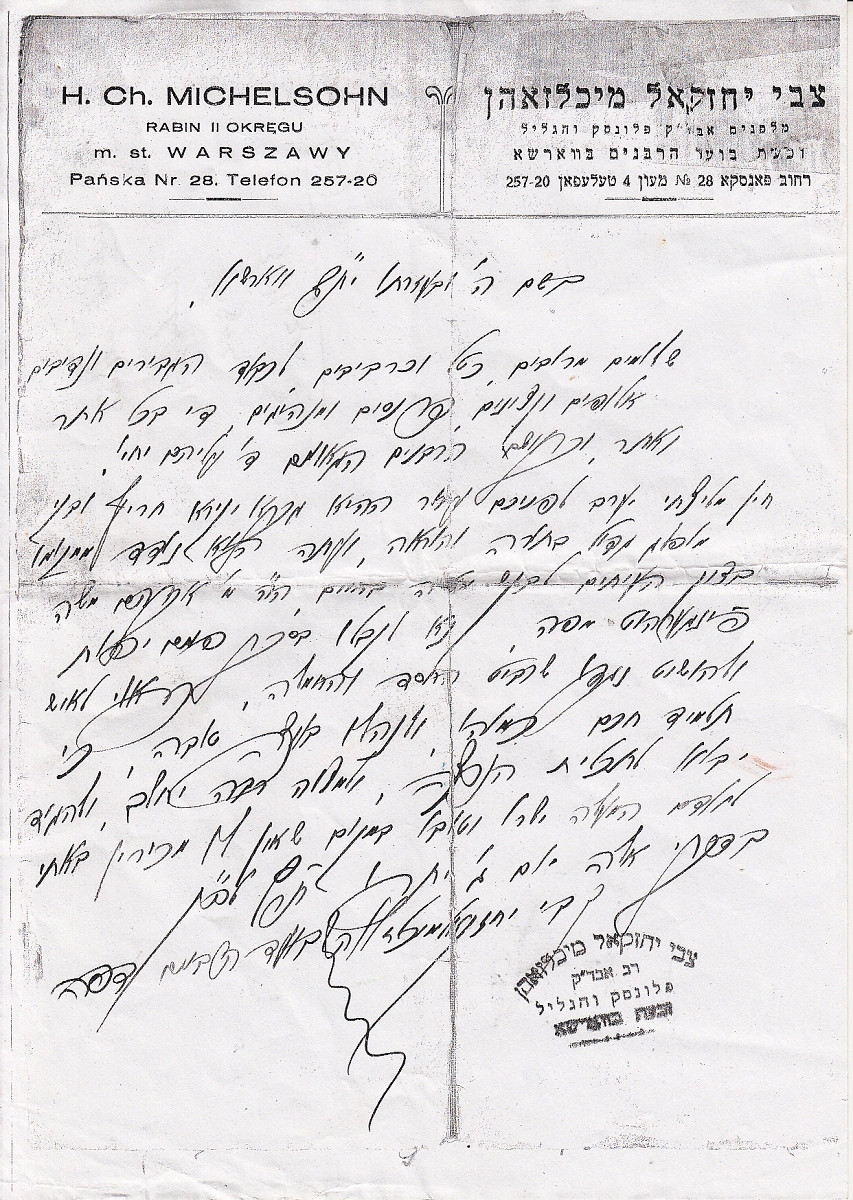
We see Paris Documents for the naturalization of their first son, and it states she was born in Warsaw in 1904, daughter to Mendel Hermelin and Mendla (Mindla most likely) nee Trepman.
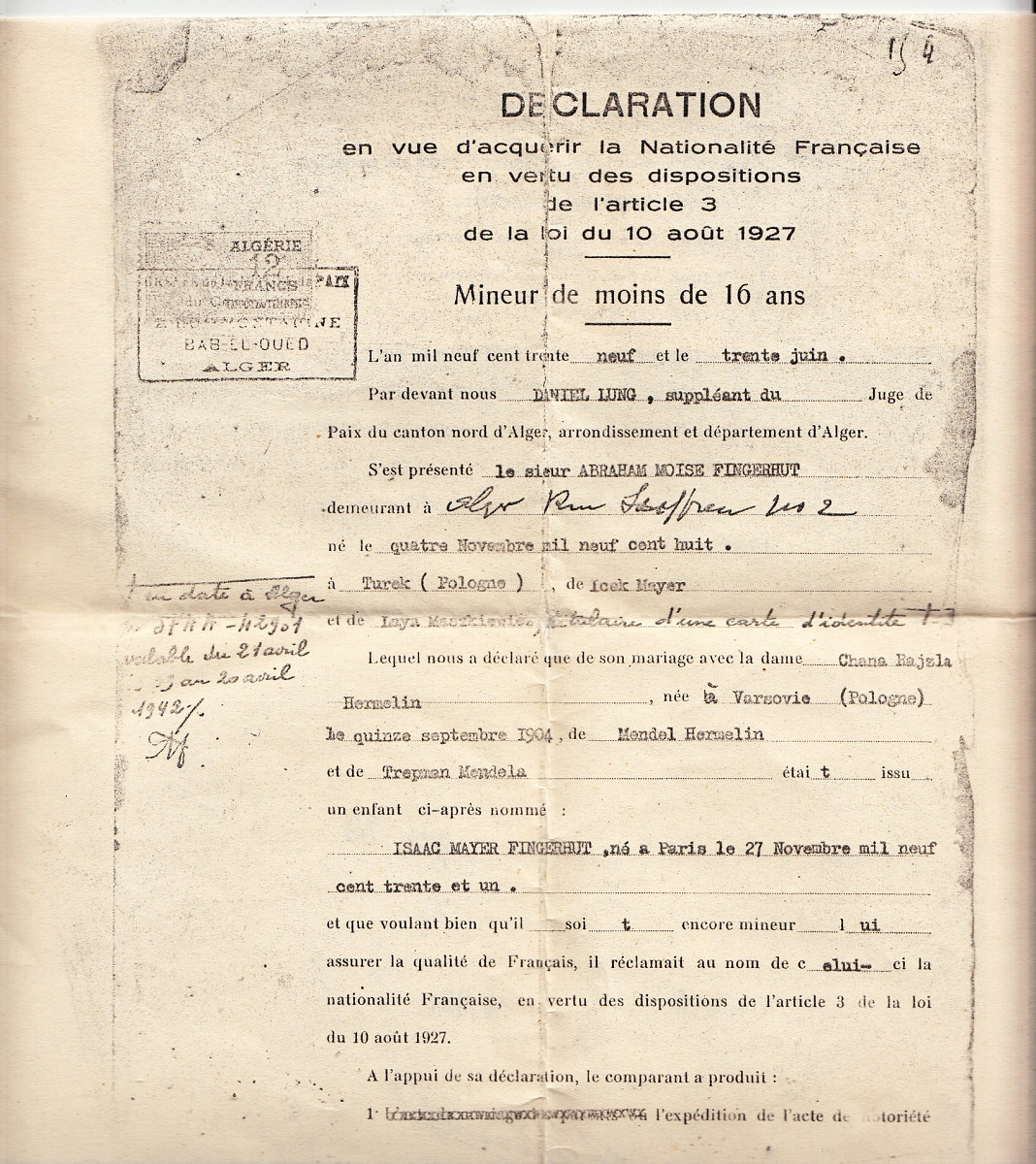
Later a letter from Lisbon, stating the wife returned to Warsaw and there published a slander about him (in Heintige Naies, July 1 1934).
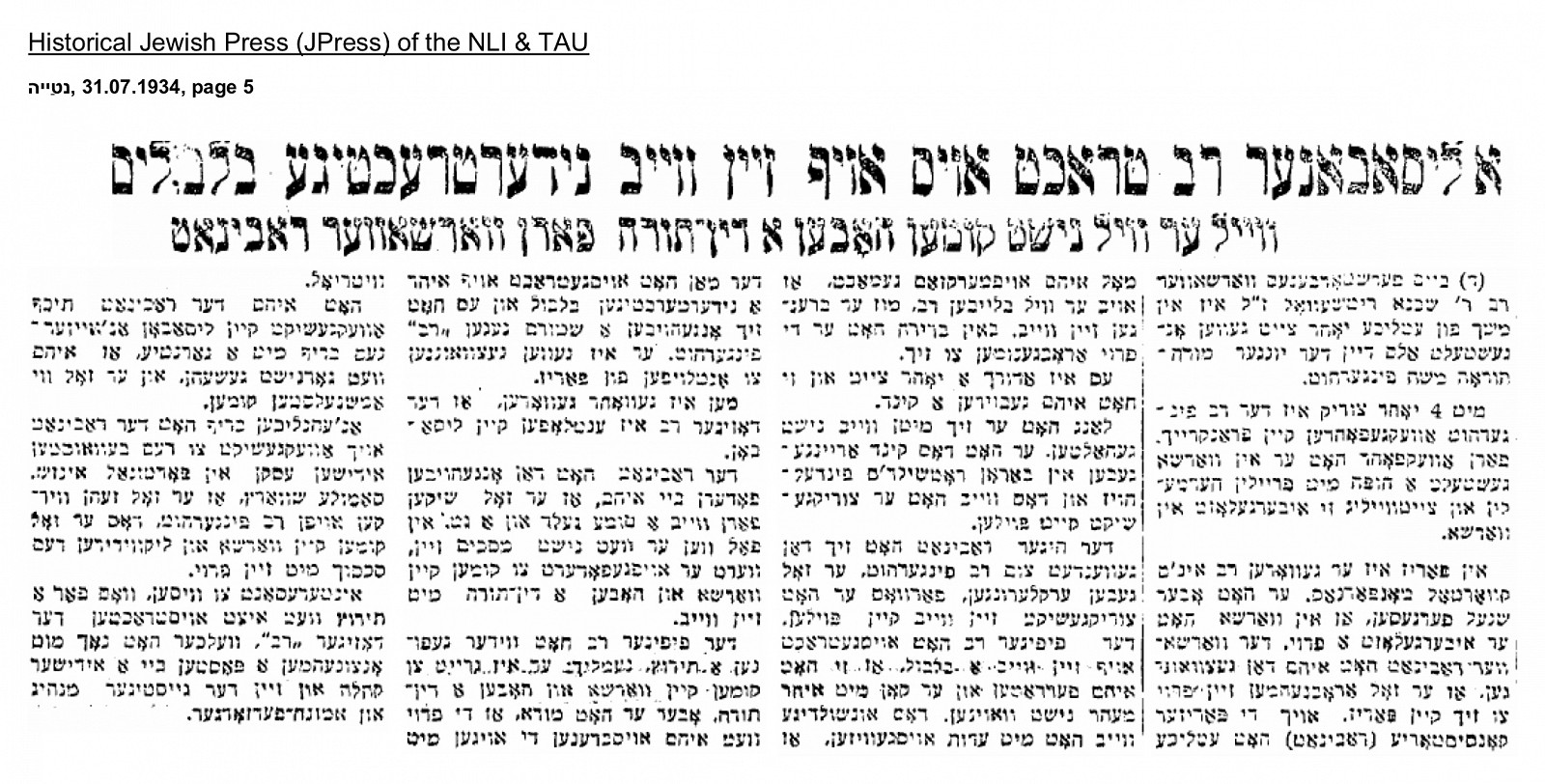
Avram Moshe Fingerhut is writing from Lisbon to the Parisien rabbis he worked with to help him fight the slander, and also the Warsaw rabbis. From this time we know, Chana Hermelin lives at Rynkowa 3 — close to Plac Żelaznej Bramy and the market in the square called Gościnny Dwór (also known by many Jews as Gnojna street).
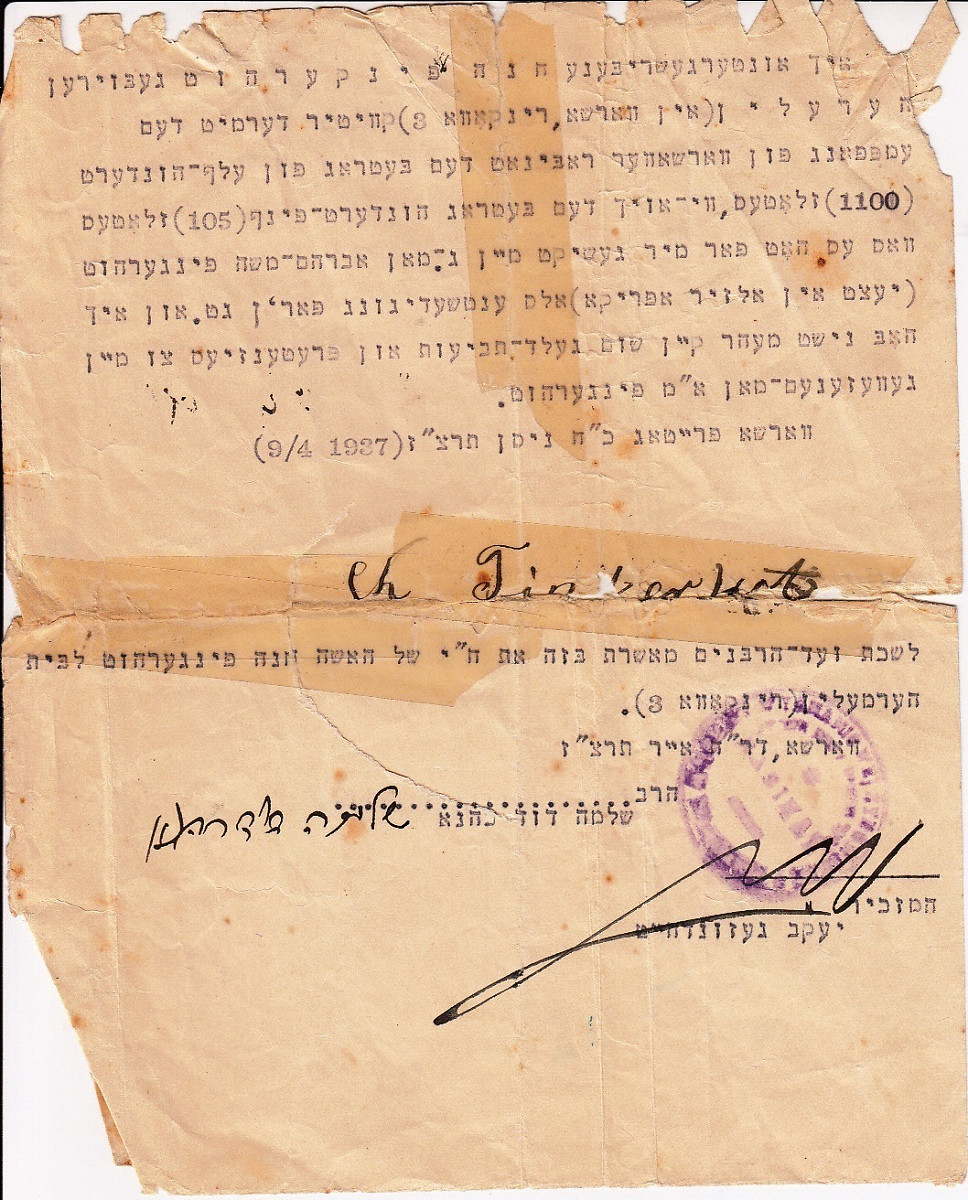
Caption – Chana Fingerhut nee Hermelin – from Rynkowa 3 – this is a receipt from the Warsaw Rabbinate at Grzybowska St. to confirm she gave back her Ketuba (wedding contract) and received money from her husband according to the conditions mentioned there.
The documents continue to tell the story of Rabbi Fingerhut asking to find a rabbi to be his ‘lawyer' instead of the Rabbinical court in Warsaw. This Rabbi is arguing for his salary and commission, and finally — the verdict certifying the divorce — signed by two of the Warsovian rabbinical court — Rabbi Gezundheit and Rabbi Kahana.
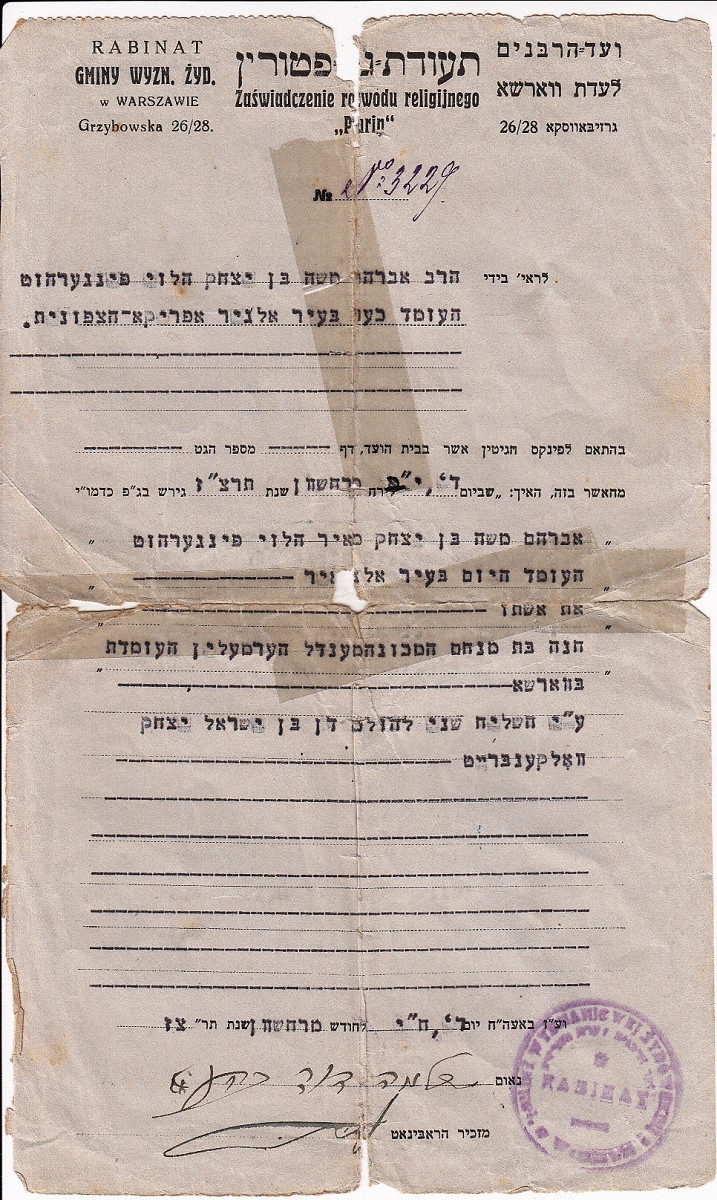
We did not know almost anything about Chana Hermelin later on, and this is why the family approached us — to find some information about her. We can assume she came back and lived with family members, yet in business directories, newspapers and address books we can not find any resident in Rynkowa 3, which is connected to the Hermelin or Trepman.
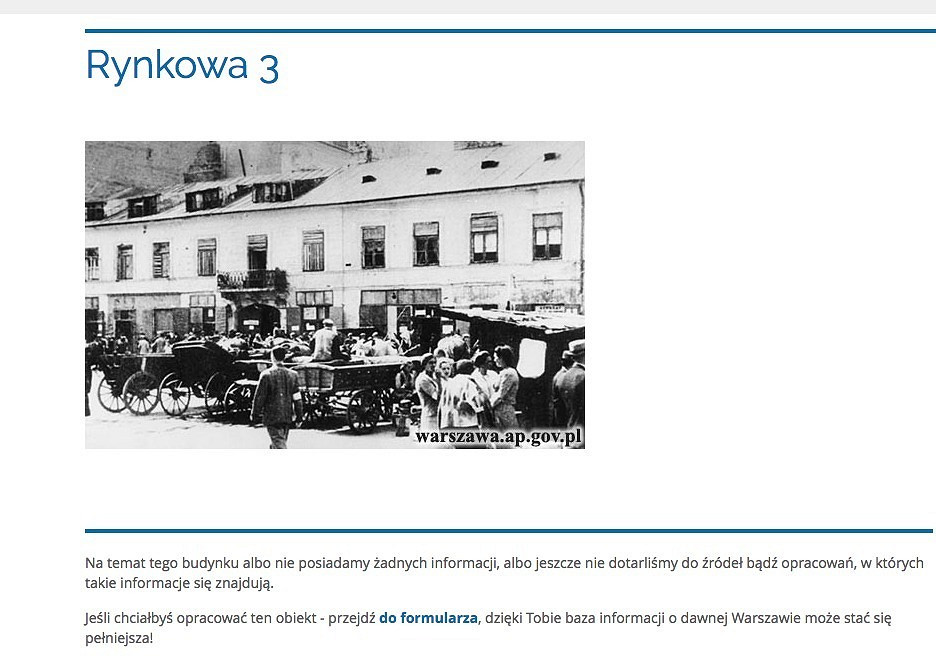
Then came the war — there is one certificate of death from 1940 by the name of Chana Hermelin, which states an address in Dzielna street 52, apartment number 22. There are no further details about the deceased — no age, names of parents, occupation or previous address. Just a name and the date and time this person died. We can not be sure it is her, but this silent ending fits a person whose life’s drama we do not see in the papers about her.
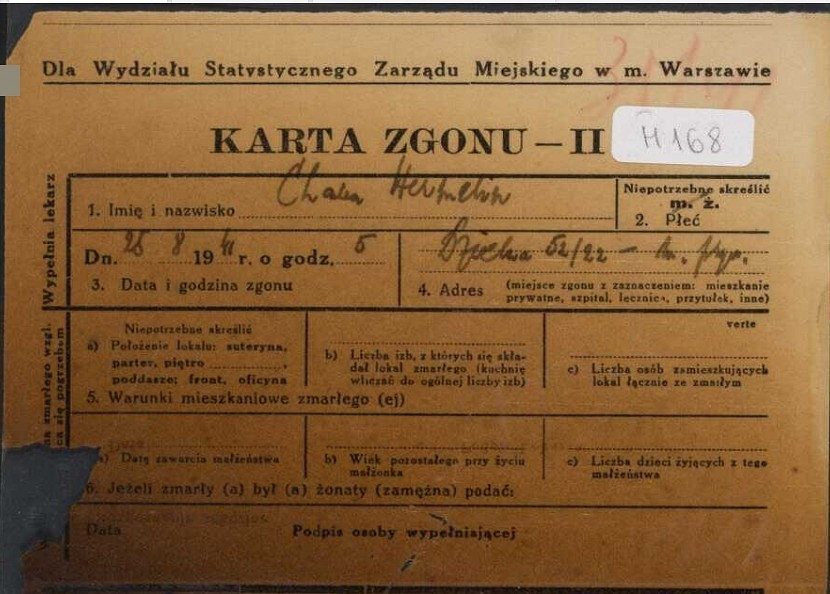
As the family told us and shared information with us – Rabbi Avraham Moshe Fingerhut was later serving for a long time as the Chief Rabbi of the Algerian Jewish community – wrote halachic books, received honours as being the Rabbi of the French Navy forces and the medal of the Legion of Honor of the French Republic.
